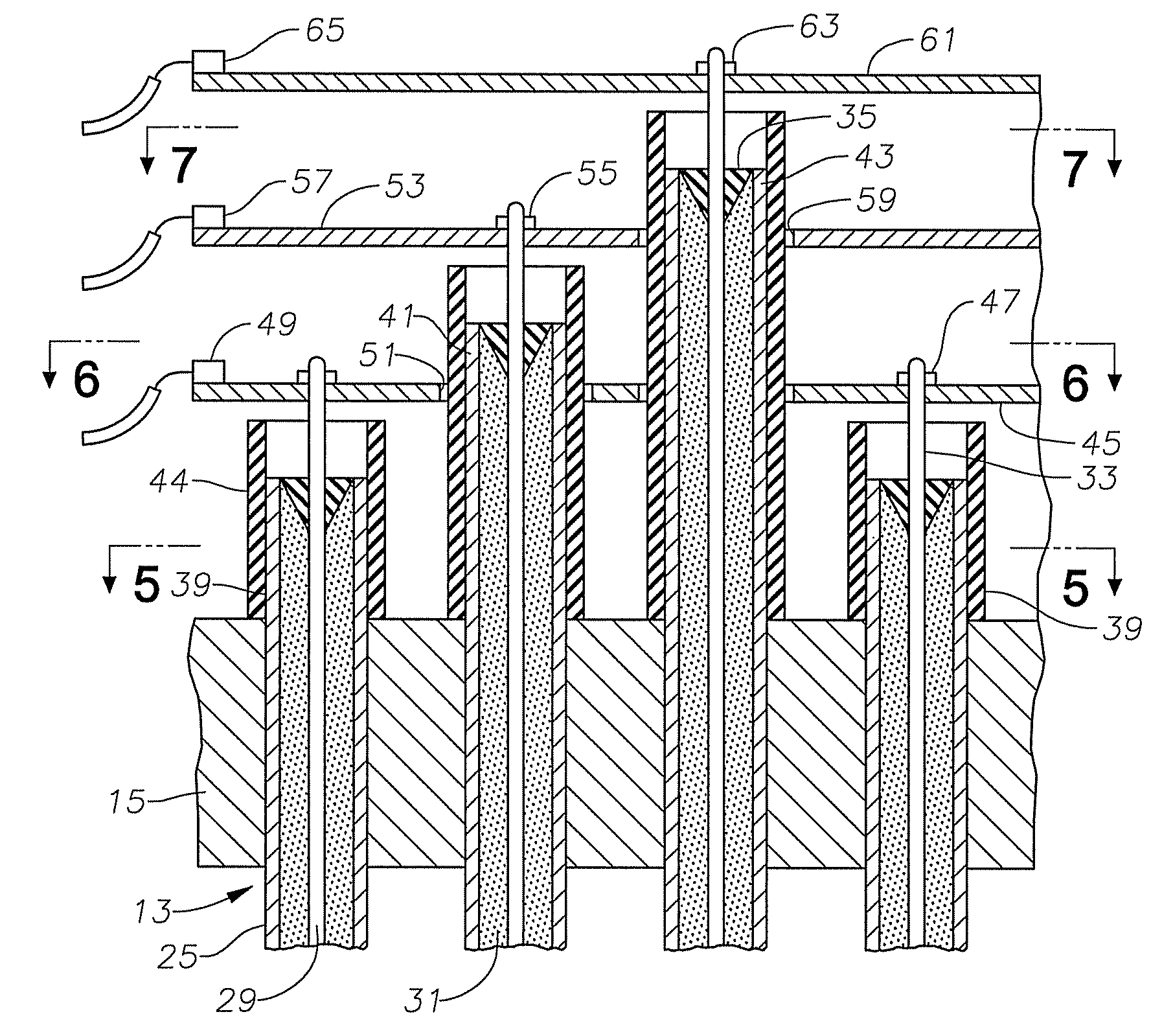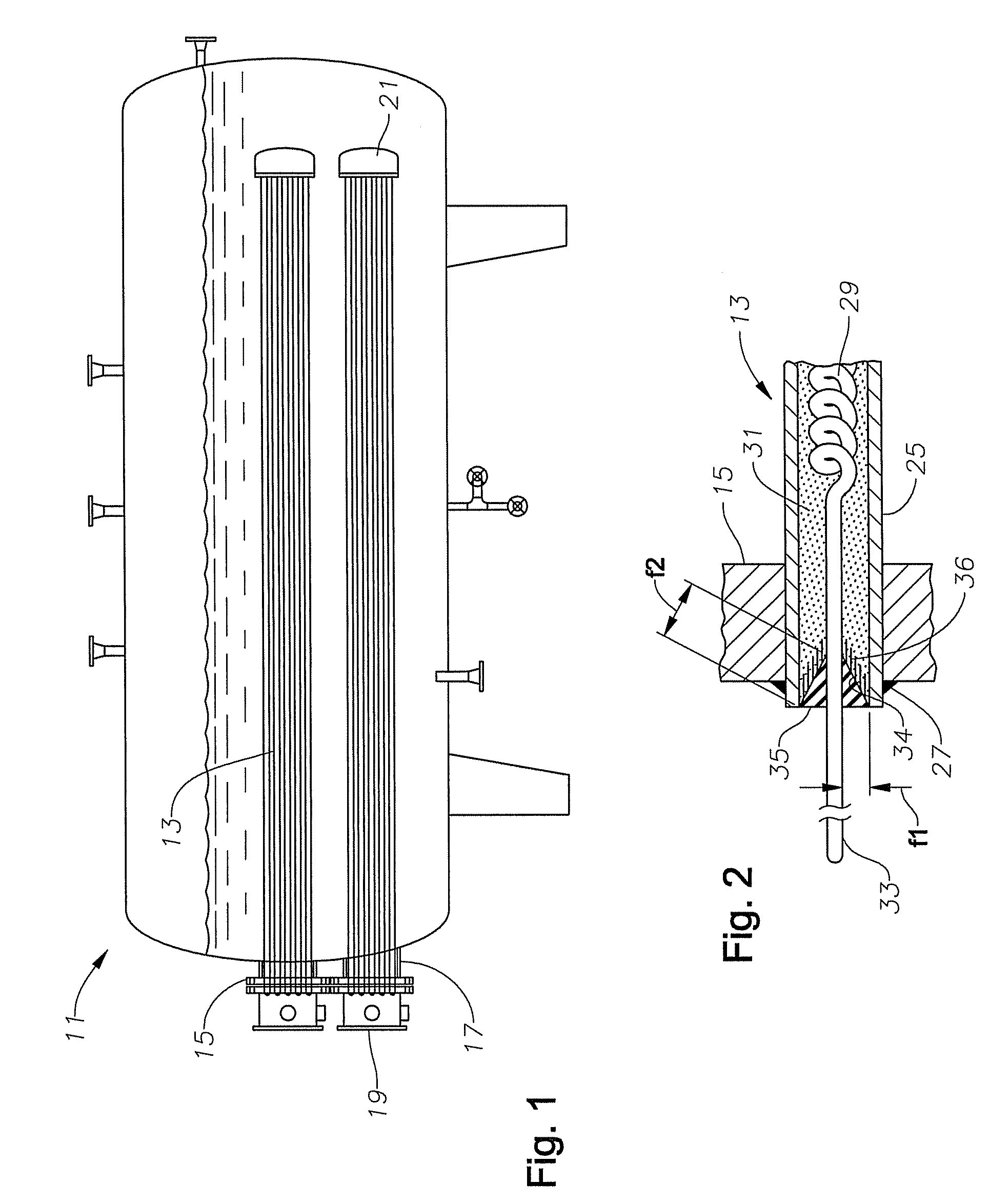Medium voltage heater element
a heater element and medium voltage technology, applied in the field of heater elements, can solve the problems of increasing the demands of the heat exchanger heater element, reducing the ability of the insulation powder to insulate, and so as to reduce the proximity of the connector pin
- Summary
- Abstract
- Description
- Claims
- Application Information
AI Technical Summary
Benefits of technology
Problems solved by technology
Method used
Image
Examples
Embodiment Construction
[0018]Referring to FIG. 1, a plurality of heater elements 13 extend into a tank 11 used for heat exchange purposes, typically in chemical and petroleum processing industries. Heater elements 13 preferably operate with three-phase AC power in the range from about 2,400 to 4,160 volts. Although considered a medium voltage for electrical power transmission in general, this voltage is higher than the voltages used typically with prior art process heat exchanger heater elements, typically about 600 to 640 volts. Heater elements 13 are shown in two separate bundles, but more or fewer bundles of heater elements 13 could be utilized. Heater elements 13 are tubular members that are immersed within water or other liquid for heating the liquid.
[0019]An exterior portion of each heater element 13 extends out of the front wall of tank 11 and through a header plate 15. In this embodiment, two separate header plates 15 are shown, one for each bundle of heater elements 13. Each header plate 15 has a...
PUM
| Property | Measurement | Unit |
|---|---|---|
| voltages | aaaaa | aaaaa |
| viscosity | aaaaa | aaaaa |
| pressure | aaaaa | aaaaa |
Abstract
Description
Claims
Application Information
 Login to View More
Login to View More - R&D
- Intellectual Property
- Life Sciences
- Materials
- Tech Scout
- Unparalleled Data Quality
- Higher Quality Content
- 60% Fewer Hallucinations
Browse by: Latest US Patents, China's latest patents, Technical Efficacy Thesaurus, Application Domain, Technology Topic, Popular Technical Reports.
© 2025 PatSnap. All rights reserved.Legal|Privacy policy|Modern Slavery Act Transparency Statement|Sitemap|About US| Contact US: help@patsnap.com



